Two Easy Ways to Fold a Prefold Diaper
This post may contain affiliate links, including those from Amazon.com, which means we earn a small commission off your purchases. And here's the thing: We only mention services and products that we think are truly worth your attention, whether they're free, paid, or otherwise. This site relies on YOUR trust, so if we don't stand behind a product 110%, it's not mentioned. Period.
I've written fairly extensively about the beauty and simplicity of the prefold cloth diaper. While I love the design and ease of use of many of today's innovative cloth diapers, the prefold is the simple, frugal, no-stress way to take care of your diapering needs.
I've been asked several times lately how to use prefolds, so I'm putting up this post as a visual tutorial with two examples that make using prefolds easy.
How to Fold a Prefold Using a Snappi
For this method, all you need are your prefold, a cover, and a Snappi.
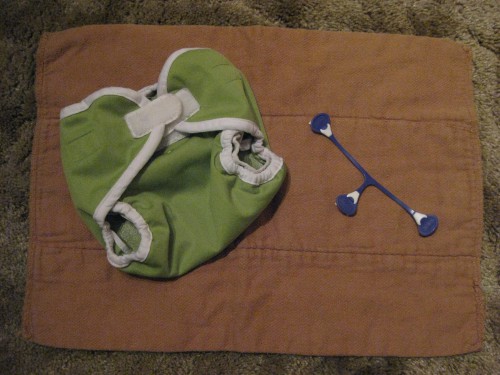
To start, lay your prefold flat, noting where the seams are.
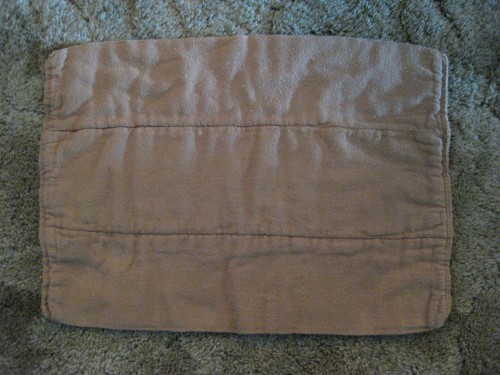



Fold the prefold along the seams.
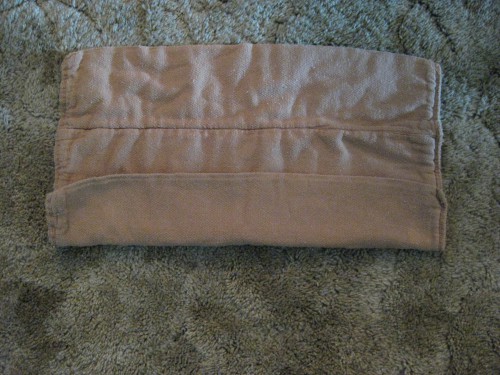


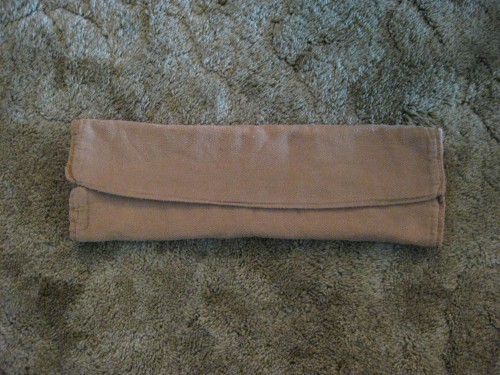


Then open up the folds at one end, creating a “poo pocket.” Notice you've created nice little wings.



Lay your baby on the prefold, making sure the back of the prefold is at about belly button level.
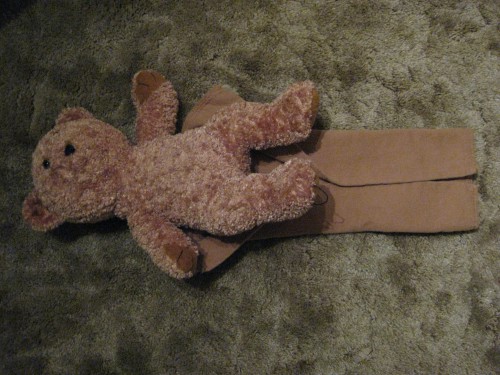
Pull up the front of the prefold. The front is obviously too long, but that's the brilliance of the prefold – it's the ultimate “one size” diaper!
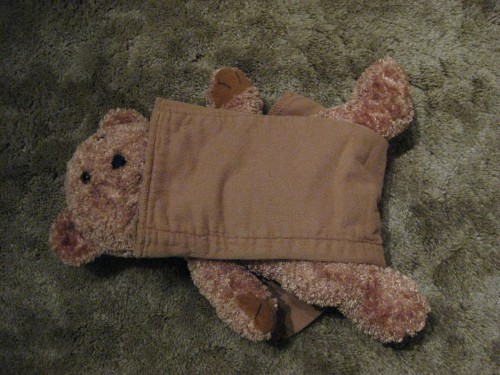
Roll/fold the front down to about belly button level. Note that you've now created wings on the front as well.
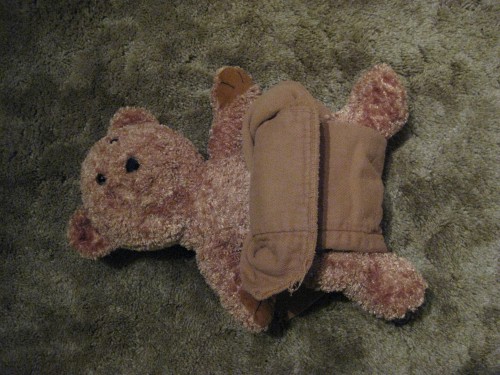
Now, this is when your Snappi comes in. This is a handy-dandy little tool that makes the need for pins obsolete. It's semi-stretchy with little hooks on the back of each end, similar to a tensor bandage.
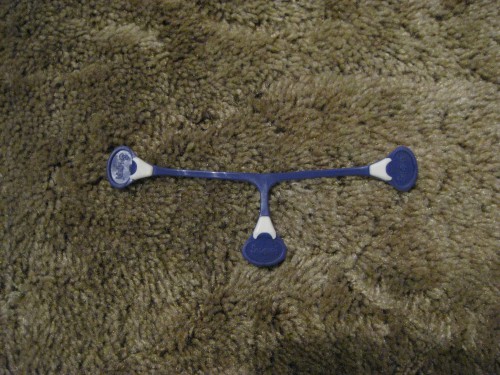
Tuck the top wings against the baby's sides and pull the back wings up over the top as snugly as possible. Hold everything together with one hand.
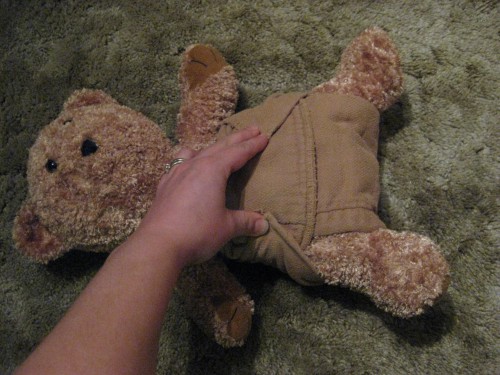
With the other hand, hook one long end of the Snappi on one hip, then stretch it across the folded front of the diaper and hook the other long end on the opposite hip. Pull the short end down as far as you can comfortably and hook it in to snug everything up.
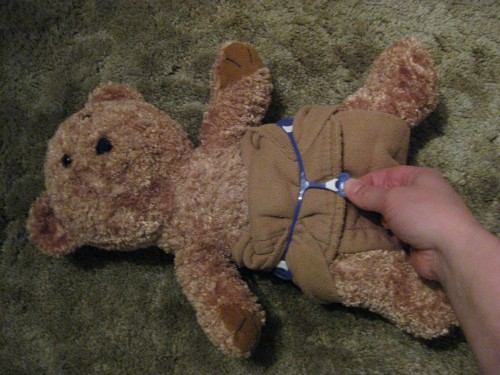
There… now Mr. Bear is all snugged up.

We still need a waterproof covering, though, so open your cover, lay your baby on it, and fasten it up. Depending on your type of cover, this could be with snaps, velcro, or a simple wool cover that just pulls on. In this demonstration, I've used a wrap cover with velcro.
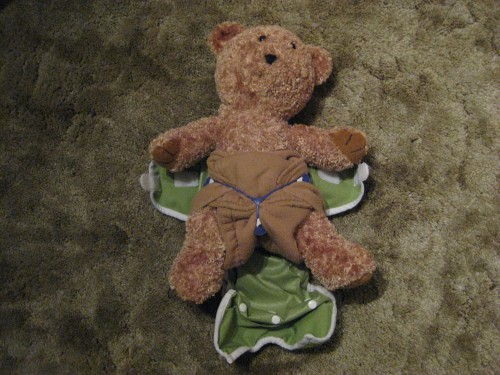
Once the cover is fastened, do a final double-check around the legs, tummy, and back to make sure no bits of diaper are sticking out. If there are, just tuck them into place inside the cover.
And you're done! Your baby will be dry and leak-proof (not to mention fashionably attired) for a few hours.
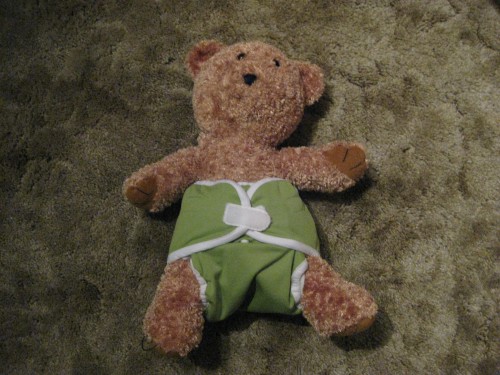
How to Fold a Prefold without Using a Snappi
For this method, all you need are a prefold and a cover.
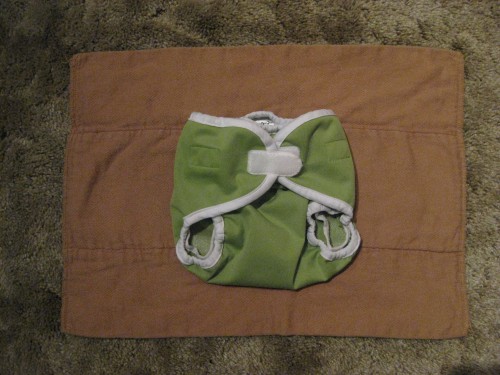


Lay your prefold flat, noting where the seams are.
Tri-fold the diaper against the seams.
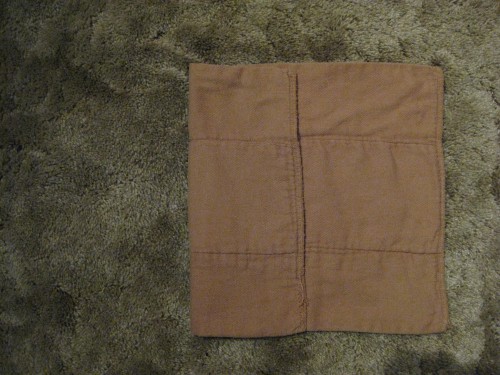


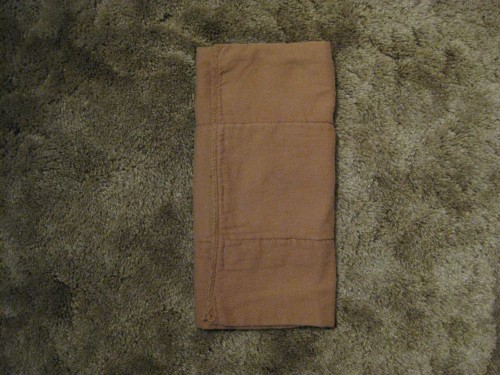


Lay the tri-folded diaper into a cover (this method only works with a wrap cover – pull-up style covers won't keep the diaper sufficiently in place).
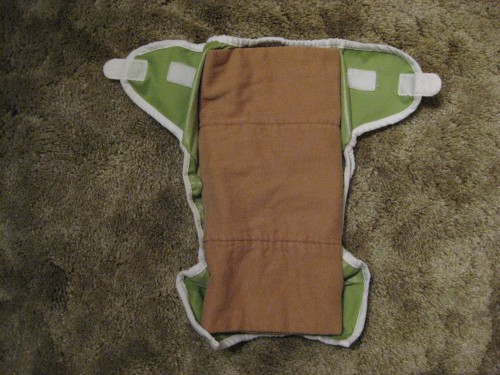


Lay your baby on the diaper at about belly button level.



Fasten the diaper into place and make sure there are no bits of diaper peeking out around the legs, back, or tummy.
And that's all there is to it! You have an absorbent diaper paired with a waterproof cover that will keep your baby comfortable and leaf-proof.
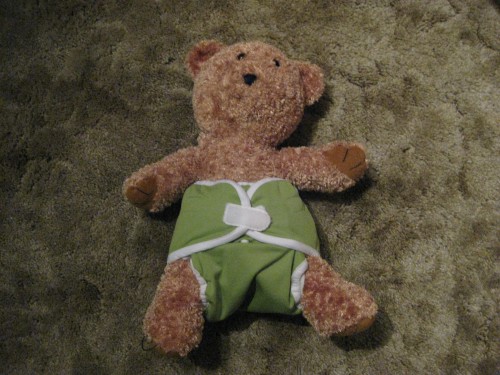



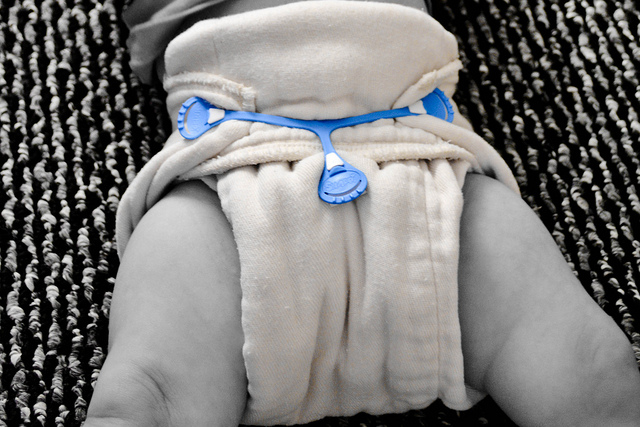




Thanks for that, Kresha! 🙂
Thanks Kresha! I’m looking forward to seeing more!
I love this !!! I have a 8 month old son that I use disposable diapers with, but he has a major pooping problem, reading this, it seems like cloth diapering may have helped. I have my own blog and would love to feature some bits and prices of your posts. I would love to hear back and see if that would be possible. Thanks for the post and all the support to moms. Your awesome!!!
I’m so glad this is helpful! 🙂
Contact me at kresha @ nourishingjoy . com with specific questions or let me know what you’d like to use and I’d be happy to help.
I’m curious why you show trifolding as being done against the seams instead of along the seams? Is it the size of your particular prefold (if it was too long when Snappi’d, I guess it would also be too long when trifolded!) I just know that more and more prefolds are being offered in “smart fit” or “smart size” sizes, so that they’re designed to fold along the seams and fit in the cover.
That’s a great question! 🙂
Yes, many marketers and cloth diapering manufacturers are playing to that level of convenience by creating “smart fit,” insert-type prefolds, you’re definitely right.
The short answer to your question is that the second option to fold AGAINST the seams is provided merely to give an option that doesn’t require a Snappi.
The long answer is that true, classic prefolds will be a mainstay in the cloth diapering world for years to come, regardless of whatever else may come and go, and having a few options for how to use them is handy. Classic prefolds have a middle section that is thicker and more absorbent than the side sections (that’s what the “8” stands for in 4x8x4, for example – in a classic prefold, there are 4 layers of fabric on each of the sides and 8 layers of fabric in the middle), which means that when you fold them against the seams, it creates a more uniform absorbency down the length of the diaper, which can be helpful at naptime or with little boys. They also are longer than needed on purpose, because that way you can fold them to exactly where YOUR baby needs them.
This makes classic prefolds the most frugal, the longest lasting, and the most versatile, since they fit any baby and can fit inside ANY cover, not just to accompany a certain brand or size of cover. However, this does involve more wrangling and is often thicker, which is why so many manufacturers started making foldable inserts that specifically fit their covers/pockets/shells, which offers a quicker, trimmer solution that isn’t as expensive as some of the all-in-ones or highly tailored cuts.
So, I hope that helps. Thanks for a great comment!